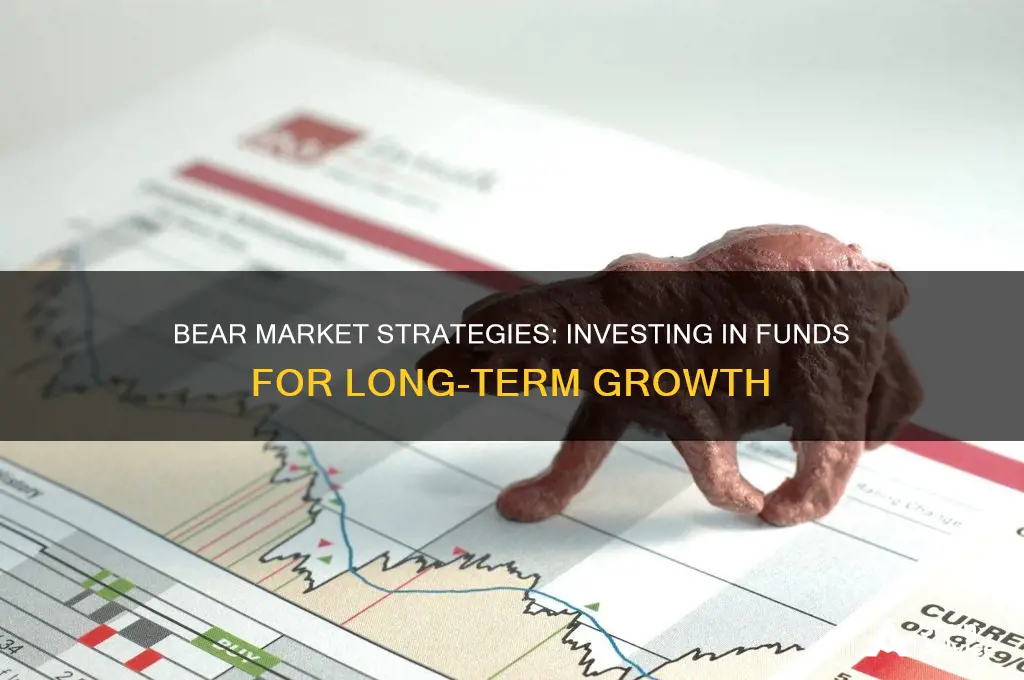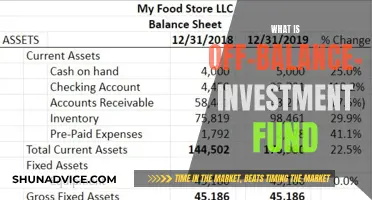
Bear markets are a normal part of the market cycle, but they can be scary for investors. A bear market is defined as a decline of 20% or more in a broad market index, such as the S&P 500 or Nasdaq Composite, over an extended period. While it can be challenging to know exactly when a bear market will begin or end, there are strategies investors can use to protect their portfolios and even take advantage of the downturn. Here are some key tactics to consider when investing in a bear market:
- Dollar-cost averaging: This strategy involves investing a fixed amount of money in the market at regular intervals, regardless of the share price. By investing a consistent amount, you buy more shares when prices are low and fewer when prices are high, helping to smooth out the purchase price over time.
- Diversification: During a bear market, almost all securities experience a price decline, but not necessarily by the same amount. By diversifying your portfolio across different asset classes, sectors, and geographies, you can minimise the impact of the market downturn and lower the overall volatility of your portfolio.
- Defensive stocks: Some stocks may be less volatile than others during a bear market. These defensive stocks tend to have large market capitalisation, consistent profits, ample dividends, low debt, and operate in industries with high barriers to entry, such as telecommunications, utilities, banking, energy, and railroad building.
- Long-term perspective: Bear markets are typically shorter than bull markets and tend to be less severe in terms of statistical losses. Historically, bear markets have lasted an average of 14 months, while bull markets have lasted around 60 months. So, while it can be difficult to endure, a long-term perspective is crucial when navigating a bear market.
| Characteristics | Values |
|---|---|
| Average length of a bear market | 389 calendar days |
| Average length of a bull market | 1,742 days |
| Average bear market loss | 33% |
| Average bull market gain | 159% |
| Bear market definition | A decline of 20% or more in equity assets |
| Bull market definition | A gain of 20% or more |
| Defensive stocks characteristics | Large market capitalization, consistent profits, ample dividends, relatively low debt, wide “moats” (protection against competition) |
What You'll Learn

Diversify your portfolio
Diversifying your portfolio is a crucial step in any market, but it becomes even more important during a bear market. Here are some detailed tips to help you diversify your portfolio effectively during a bear market:
Spread the Wealth
Don't put all your eggs in one basket. Diversification is about investing in a variety of asset classes, sectors, and companies. Consider investing in a range of equities, commodities, exchange-traded funds (ETFs), and real estate investment trusts (REITs). Think globally and spread your investments across different markets and industries. However, keep your portfolio manageable. Limit yourself to around 20-30 different investments to ensure you can effectively monitor and manage your portfolio.
Consider Index and Bond Funds
Adding index funds or fixed-income funds to your portfolio can provide long-term diversification benefits. These funds track various indexes and aim to match the performance of broad markets, reducing the risk associated with investing in a specific sector. Index funds also tend to have low fees, putting more money back in your pocket. However, keep in mind that they are passively managed, which may be suboptimal in inefficient markets.
Keep Building Your Portfolio
Regularly add to your investments using a strategy like dollar-cost averaging. This approach helps smooth out market volatility by investing a fixed amount at regular intervals. As a result, you buy more shares when prices are low and fewer when prices are high, reducing your overall investment risk.
Know When to Get Out
While buying and holding is a sound strategy, it's important to stay informed about your investments and the overall market conditions. Be prepared to cut your losses and sell if necessary, especially if the companies you've invested in are undergoing significant changes or if the market conditions have shifted drastically.
Keep an Eye on Commissions
Understand the fees associated with your investments. Some firms charge monthly fees, while others have transactional fees. These costs can add up and eat into your profits. Be aware of what you're paying for and whether there are any changes to your fee structure.
Focus on Defensive Sectors
During a bear market, consider investing in defensive sectors such as consumer staples, utilities, and healthcare. These sectors tend to outperform during market downturns as they provide essential goods and services that remain in demand regardless of economic conditions. Large-cap companies in these sectors also tend to have strong balance sheets, making them more stable investments.
Diversification Benefits
A well-diversified portfolio can curb bear market risks while increasing long-term returns. It helps to reduce volatility and unnerving fluctuations in your portfolio. Historical data, such as returns during the Great Depression, show that a diversified portfolio across stocks, bonds, and cash can provide strong returns even during challenging economic periods.
Avoid Over-Diversification
While diversification is essential, be cautious not to over-diversify your portfolio. Adding too many closely correlated securities or exceeding the ideal number of securities can increase overall risk and lower expected returns.
By following these tips, you can effectively diversify your portfolio during a bear market, curbing risks and maximizing long-term returns. Remember to regularly review and adjust your portfolio as market conditions evolve.
Target Date Funds: Understanding Your Investment Options
You may want to see also

Rebalance your portfolio
A bear market can throw your asset allocation mix out of whack. As stocks lag, your bond portfolio may start to outperform, and your actual mix no longer matches your risk profile. Therefore, it is important to rebalance your portfolio to ensure that its composition aligns with your desired risk tolerance and investment objectives.
A diversified portfolio consists of multiple asset classes like stocks, bonds, and cash. The ratio of each asset should be determined by your time horizon, risk tolerance, and investment objectives. Portfolio rebalancing usually means periodically selling overweight assets and buying underweight assets until your portfolio is back to its target asset allocation. However, during a bear market, rebalancing may include asset classes you didn't own before, like short-term bonds or longer-term fixed-income assets.
Of course, you might end up selling winners and buying losers, which can seem counterintuitive. But it is crucial to ensure that your portfolio is properly diversified between a variety of asset classes, not just stock market sectors. Diversification dampens the volatility that tends to increase during bear markets and can subject investor portfolios to unnerving fluctuations.
One study of returns during the Great Depression found that a portfolio with a 30% allocation to U.S. stocks, a 50% weighting in bonds, and 20% in cash would have provided deflation-adjusted annual returns averaging 7.3% between September 1929 and February 1937. This underscores the benefit of diversification.
Bear market asset allocation generally involves dialling down the percentage of your portfolio invested in stocks and increasing exposure to government bonds or cash. The best time to switch equity for government bonds or cash is before the storm hits, meaning when valuations and interest rates soar and indexes hit new records. After share prices start dropping hard, making big switches could backfire.
A balanced portfolio is your best defence. It's also worth bearing in mind that within asset classes, there are aggressive and more conservative options. For example, stocks are associated with risk, but there are certain categories of companies that are much less volatile.
Among equities, defensive stock market sectors, including consumer staples, utilities, and healthcare, have outperformed during bear markets. The goods and services these sectors supply tend to be in demand regardless of economic or market conditions. They also generate plenty of cash, supporting relatively high dividend yields. These sectors are home to many large-cap companies with strong balance sheets, whose shares tend to hold up better during bear markets than small-cap or growth stocks.
Bond Funds: Risky Business, Not Worth Your Investment
You may want to see also

Invest in defensive stocks
Defensive stocks are a good investment during a bear market. These are stocks that tend to be less volatile than others and are in sectors that people have to spend money on, regardless of the economic conditions.
Defensive stocks are generally found in the consumer staples, utilities, and healthcare sectors. These sectors tend to outperform during bear markets because their goods and services are always in demand. They also generate plenty of cash, supporting relatively high dividend yields.
Companies in these sectors also tend to have large market capitalisation, consistent profits, ample dividends, relatively low debt, and wide "moats" (protection against competition). They also tend to be in highly regulated industries, such as telecommunications, utilities, banking, energy, and railroad building.
Defensive stocks are a good option for investors who want to minimise risk or take advantage of tactical opportunities during a bear market.
Invest Wisely: Strategies for Your Child's College Fund
You may want to see also

Dollar-cost averaging
Here's how it works:
Let's say you have $100 that you want to invest in a particular stock. Instead of investing the full amount in one go, you decide to use dollar-cost averaging and invest $25 every month for four months. Here's how your investment might look:
- Month 1: You buy one share at $100.
- Month 2: The stock price drops to $75. With your $25, you buy 0.33 shares, giving you a total of 1.33 shares.
- Month 3: The stock price increases to $125. With your $25, you buy 0.2 shares, and now have a total of 1.53 shares.
- Month 4: The stock price drops again to $80. Your $25 buys you 0.31 shares, bringing your total to 1.84 shares.
By using dollar-cost averaging, you've ended up with 1.84 shares, with an average price of $91.52 per share. This is lower than the initial price of $100.
Benefits of Dollar-Cost Averaging:
- It helps to reduce the impact of volatility on your portfolio by smoothing out the purchase price over time.
- It ensures you're taking advantage of market dips and buying more shares when prices are lower.
- It removes the stress of trying to time the market and eliminates the need to constantly watch the market.
- It's a great strategy for beginners who may not have the experience to judge the best moments to buy.
- It can also benefit long-term investors who want to invest regularly but don't have the time or inclination to monitor the market closely.
Things to Keep in Mind:
- Dollar-cost averaging may result in higher transaction costs compared to investing a lump sum due to the repeated investing.
- It may not be suitable if the market is trending steadily in one direction, either up or down. It assumes that prices will fluctuate and eventually rise.
- It's important to research the company before using this strategy to buy individual stocks, as you could end up buying more of a declining stock. It's generally less risky to use this strategy for buying index funds.
Overall, dollar-cost averaging is a useful strategy for bear markets as it helps investors remain committed to their investment plans and reduces the negative impact of price volatility. It also relieves the pressure of trying to time the market and makes investing more formulaic and less emotional.
Nas' Venture Capital: Where Does He Invest?
You may want to see also

Tax-loss harvesting
Here's how it works:
- Sell securities at a loss: Identify securities in your taxable brokerage account that have lost value and sell them to realise the loss.
- Offset capital gains or income: Use the realised loss to offset capital gains from other investments or to deduct up to $3,000 from your income. This will reduce your taxable income for the year.
- Reinvest the proceeds: Use the proceeds from the sale to purchase similar securities that align with your investment plan. This helps you maintain your desired investment exposure while still taking advantage of the tax benefits.
It's important to note that tax-loss harvesting does not cancel your tax obligation but rather defers it to a future date. Additionally, there are rules and restrictions to be aware of, such as the wash-sale rule, which prohibits you from repurchasing the same or "substantially identical" security within 30 days before or after the sale.
Fidelity Proof of Funds: Accessing Investment Account Verification
You may want to see also







